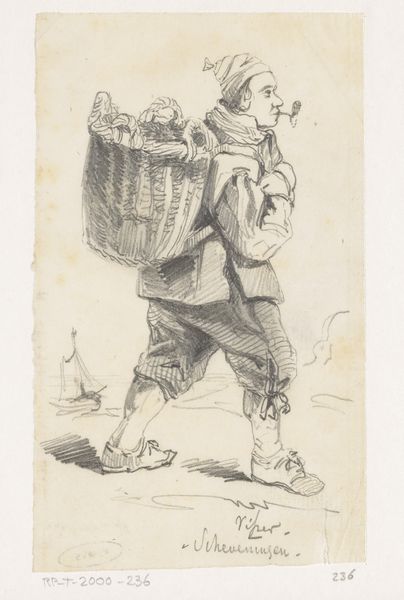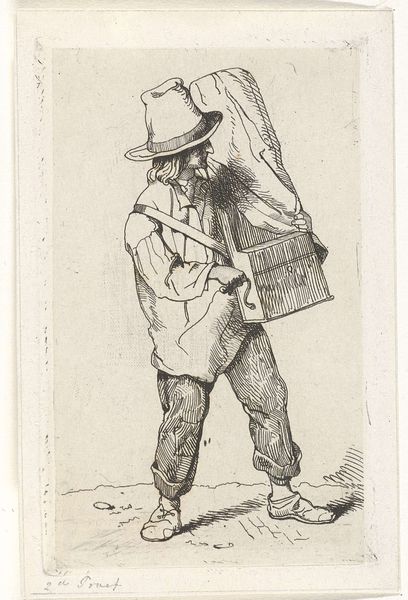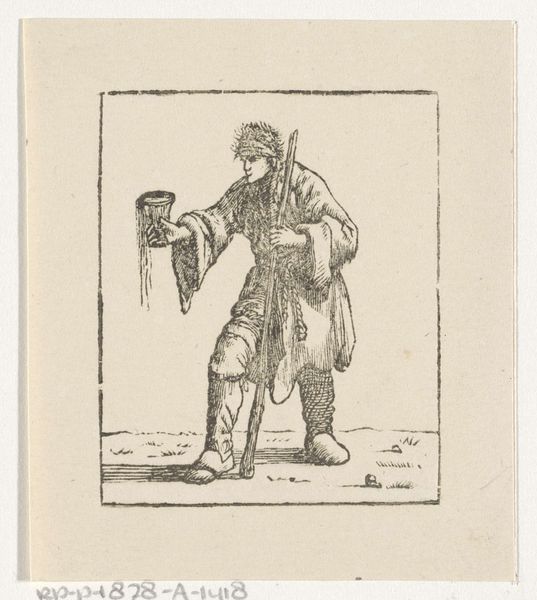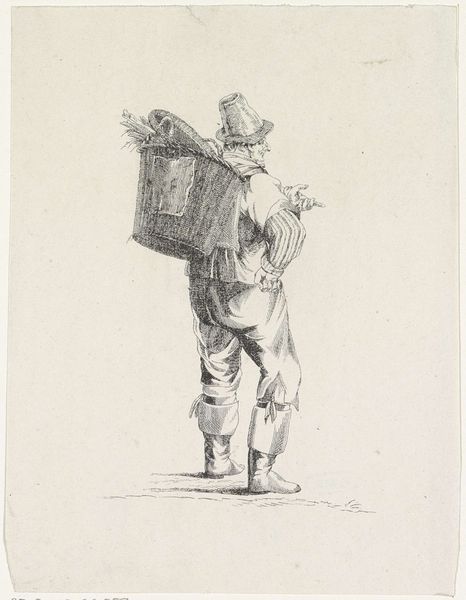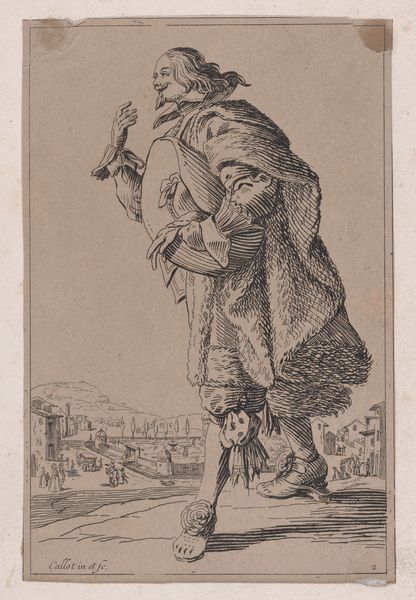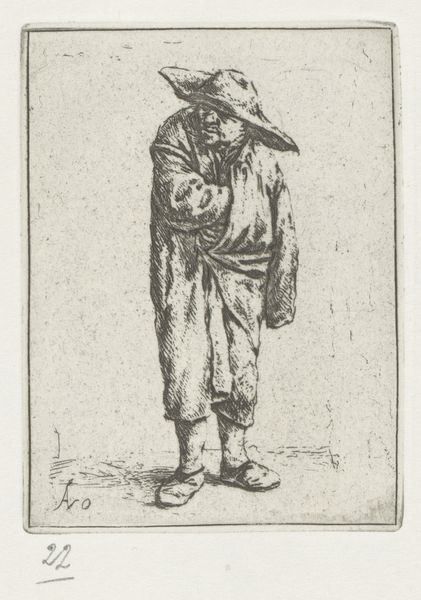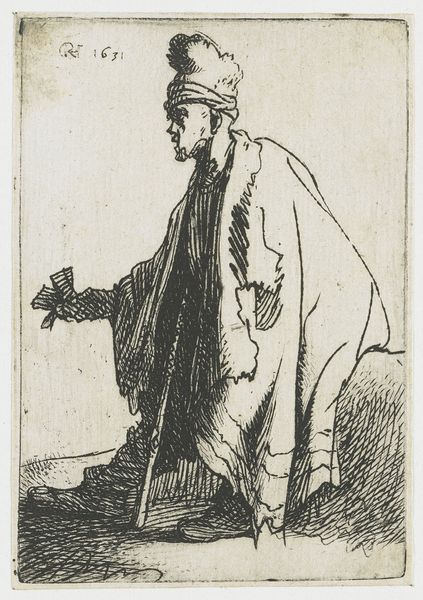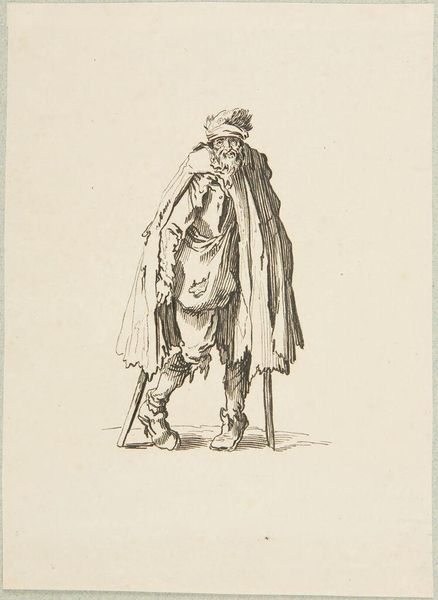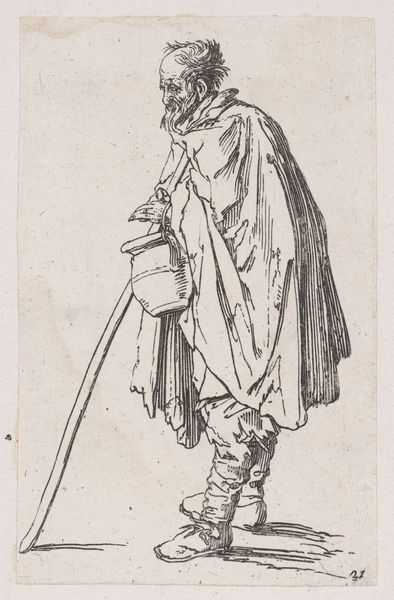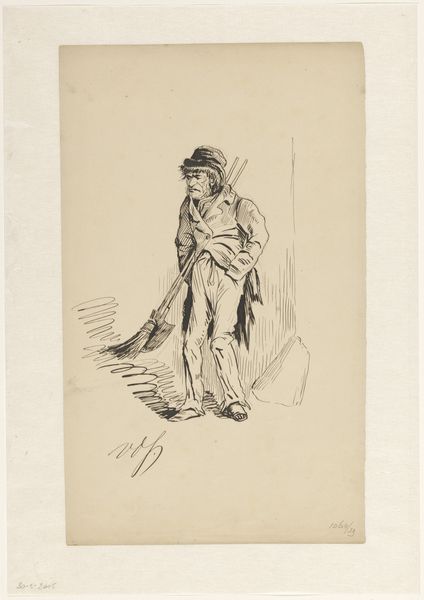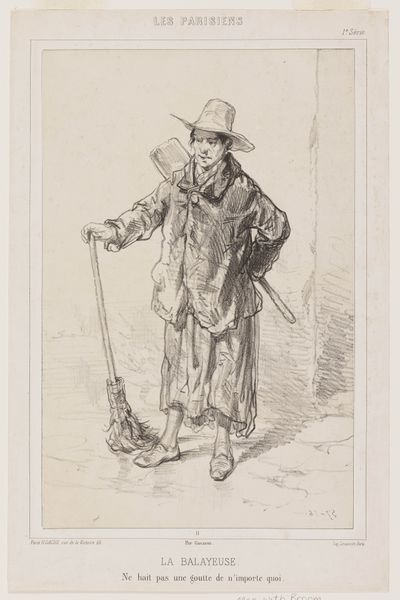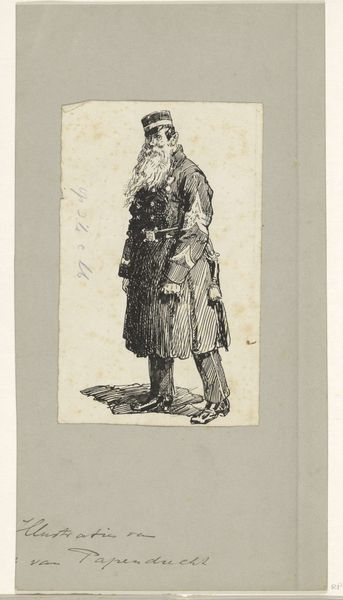
Dimensions: height 492 mm, width 272 mm
Copyright: Rijks Museum: Open Domain
Curator: This is a pencil drawing on paper entitled "Orgeldraaier," which translates to "Organ Grinder," created sometime between 1880 and 1931 by Jacobus Laurentius van Ishoven. Editor: My initial reaction is melancholy. There’s a certain starkness to the composition and the subject's downcast expression evokes a deep sense of hardship. Curator: The lines certainly emphasize a kind of raw, unvarnished realism. Note the texture Van Ishoven achieves simply with varied pencil strokes, building up density to define form, light, and shadow. He utilizes the blank paper strategically. Editor: It's hard to ignore the socio-economic implications here. The man's tattered clothing, coupled with the weighty organ, speaks volumes about the realities of poverty and survival during the late 19th and early 20th centuries. Who were the intended viewers of such a work, and what perspectives did they bring to it? Curator: Indeed. While the figure occupies a genre painting, Van Ishoven elevates this street musician from mere caricature to a figure deserving our contemplation. Consider how the composition places him front and center, almost confrontational in his gaze. He does not fit into idealised images of the time. Editor: I'm curious about the organ itself. It’s almost presented as another character, perhaps a symbol of both labor and a meager means of creative expression amid difficult conditions. His wooden shoes also indicate he may not be very wealthy and is used to physical labor. What statement does this pose about the role of working class people in Dutch society? Curator: From a purely formal perspective, I admire the work's impressionistic tendencies. There's a freedom in the sketch-like quality, a commitment to capturing an impression, and the essence of a moment rather than photorealistic detail. Editor: It also shows resilience, don't you think? He keeps going, day after day. His figure suggests social commentary, a voice for the unheard—but it also encourages dialogues about economic disparity. It leaves one contemplating larger intersectional stories. Curator: The dialogue between detailed rendering and looser, more expressive lines keeps the eye actively engaged, too. I'd love to see the drawings that came before this to understand the preparatory process. Editor: Looking closer, "Orgeldraaier" asks us to reflect critically, prompting us to understand the lives represented within this carefully composed impression. It inspires important dialogues, highlighting complex human truths found in simplicity.
Comments
No comments
Be the first to comment and join the conversation on the ultimate creative platform.
